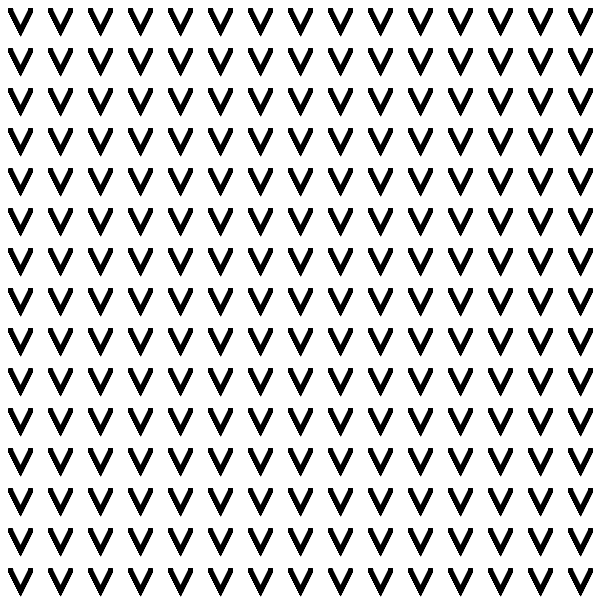For my response to Grace Hertlein I focused on two things. One was to humanize the art and make it feel alive, the other to give the computer more control and follow the surprises it produced. To start, I thought of shapes that I think of as natural or organic. One of Hertlein’s pieces, The Feild, came into mind. It is a bunch of lines that branch out at random angles and extend random lengths. A line that branches out can be found in many natural settings such as plants, veins, rivers, and cracks in ice. I started with this reoccurring natural shape and made three pieces from altering it.
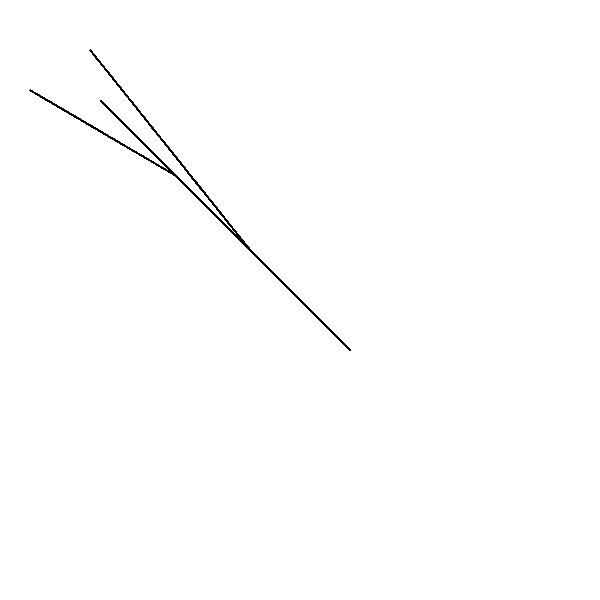
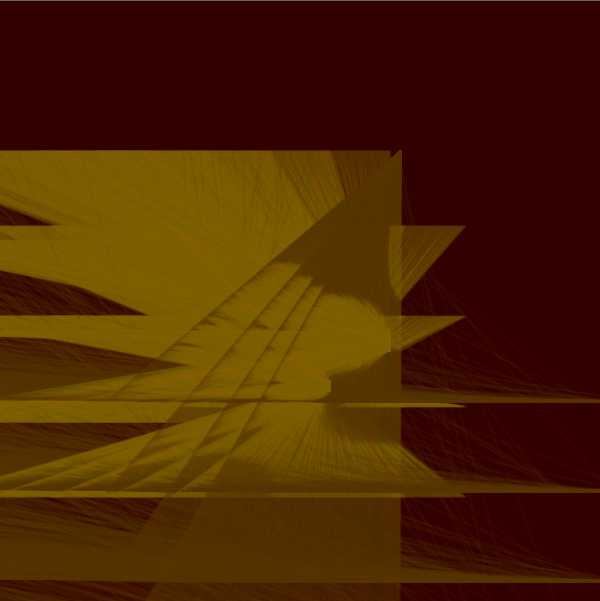
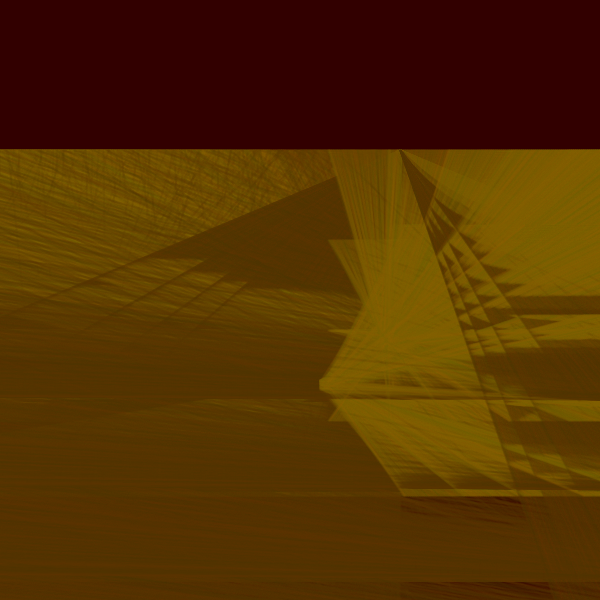
For the first piece I added the random() function to the second x,y values of the two branches that make up my starting shape. Randomness was constrained for the branches. One of the two ‘branches’ of the line had the second x value constrained to 10 pixels and the y to 20. The amount of constraint for the other branch’s x,y was flipped. The ‘line’ had its second x value multiplied to i, which make it move horizontally across the page because i was set as a loop. I also added randomness to the stroke color. The two branches had the same color with a random value of red constrained from (100,150). The line also had randomness in the red value but it was constrained from (70,100).
A surprising moment in this piece was the outcome of taking the staring shape, using a nested loop, and translating only ‘line’ part of the shape could produce this. The change in the piece that stuck out was the line of the shape rotating on a fixed point and making beam like diagonal lines. I used the increment function to bring the rotating line back on the screen, and it resulted in the layering of the beams, which resulted in a variety of triangles.
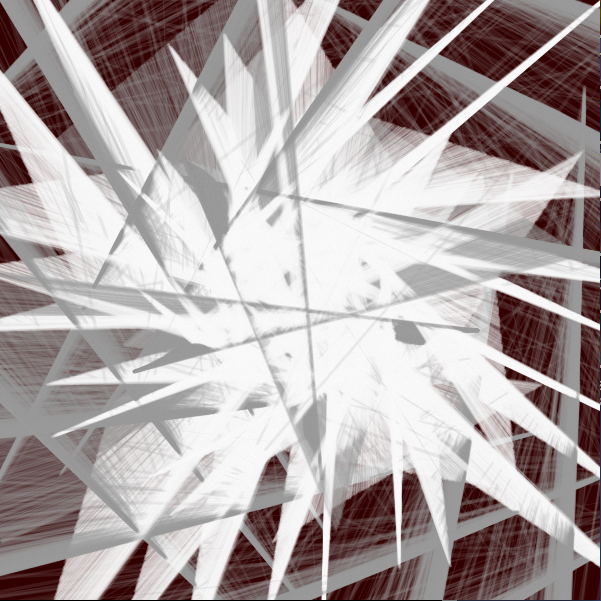

For my second piece I rotated the first at a rotation of 5. The color of the line and branches were changed, but similar to the first the branches have the same color and are lighter than the line. To bring life to the image I reversed the rotation when the increment 600 was reached. The change made the piece feel alive because it appeared to have a mind of its own instead of a computer following out orders in a linear, A to B fashion. Switching the rotation was too jarring, and it made the piece feel like it was following a program, the opposite of what I wanted. What made it jarring was the sudden introduction of many grey lines in a loose, spokes of a wheel structure. To ease the change, and make it appear more natural, when the increment reached 300 i was increased by the increment. i is attached to the x value of the line and two branches. The branches’ x value is (i – # – inc). When 300 is reached, the x value of the branches becomes only the #, and smaller than before. The grey line’s second x value (i * – 250), becomes a big number (big negative number) because i, which was 0 before and increasing by 60, now is a number >300. So, the white branches shorten and the grey lines lengthen, giving the appearance of more sharp gray lines on the screen, which eases the introduction of the grey spoke pattern, and therefore makes the image appear more alive because of a gradual shift to a change (which was the reversal of the rotation).
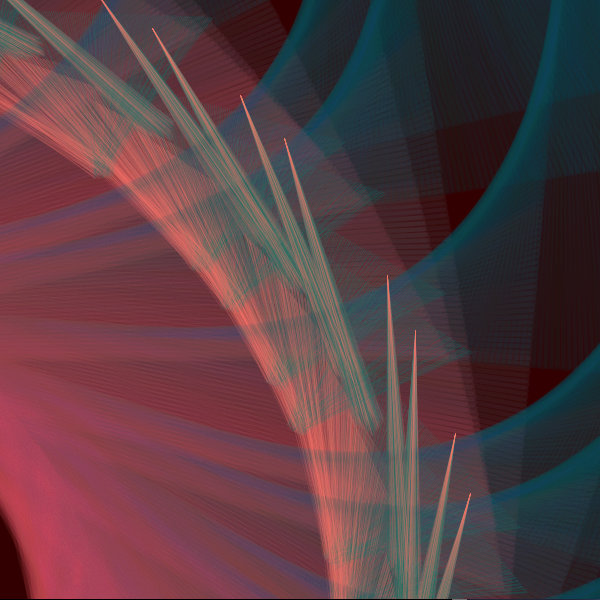

In the third image pushMatrix() and popMatrix() was removed and the line and branches were rotated differently. The branches were rotated at 0.5 and the line at 0.05. The translation of the line, which in 01 and 02 was (100,100), was changed to (250,250). Where the ‘life’ comes into this piece is when the blue bushels become pink at the tips, and match the dense pink lines under them. This lighting up happens after the sweeping grid triangle reaches the left side of the screen, and sends a wave of a gridded pink triangle to the right side. As the pink gridded triangle passes under the blue bushels, they light up pink. This reaction makes the piece look like it is respiring. The sweep of the gridded blue triangle is a breath out and the wave of the pink triangle, and lighting up of the bushels, a breath in. The lighting up of the blue bushels is from the red value of the stroke being (0 – inc *2). When the inc reaches 200 it becomes negative, and therefore the red value becomes positive in the bushel, and a pink hue is perceived.
For each of these pieces I gave the computer control by not setting out to make a certain finished product. Instead I messed around with loops and a single shape. Throughout the process I ignored my ideas of what the finished product could look like. Instead, when something interesting was generated I messed with that until something of a ‘finished’ image was present. At this point I controlled the the product by choosing color and making little variations to the structure.
Each of these pieces has an element of feeling alive to them became they change by the increment variable. I think the third is the most successful in appearing alive because its changes appear responsive, like a cause to an effect, and not at random.
These three pieces all started with the same shape, and all share the same background. They are a progression in chronological order. The progression from one to the next is not as apparent as it is in my response to Molnár or Nees because I changed multiple things from one piece to the next.
My pieces do lack a important quality of Hertlein’s work. They don’t appear to be made by painting or from some visual art. All colors have a alpha no bigger than 50, but my pieces still appear sharp and defined. Part of this could be because I started with a angular and defined shape. Another reason is because my pieces lack the depth of Hertline’s. If I chose the line or branch to be smaller and have a very low alpha and the other to have a high alpha and be bigger I could have gotten more depth to my pieces. Hertlein’s work also appears organic, and while I started with a shape from nature, my resulting work is less organic than I thought it would be.
I learned a new way to code by responding to Hertlein. I learned that giving the computer control and making a piece that did not set out to be a sort of experiment of composition or math can be just as surprising. I enjoyed making pieces that felt ‘alive’.
